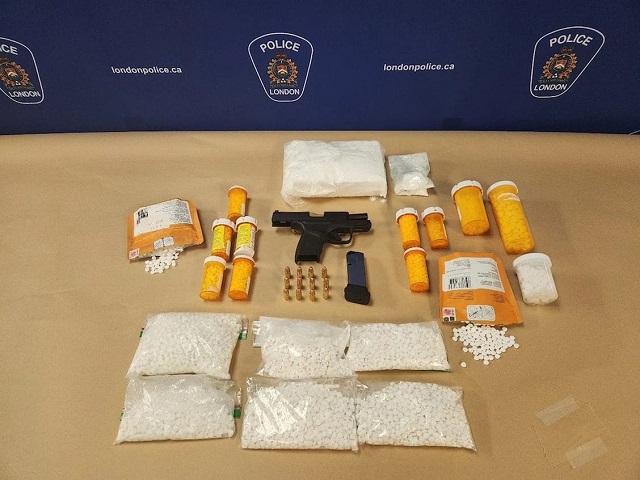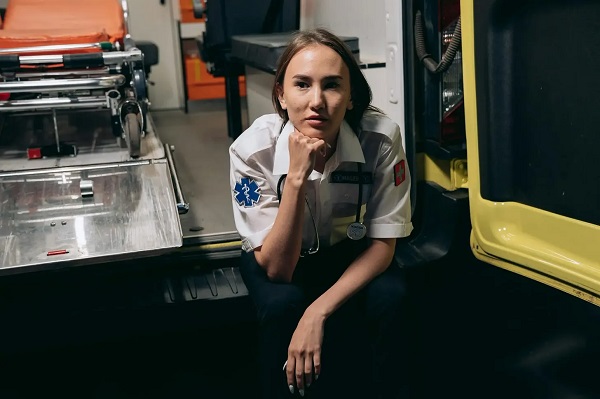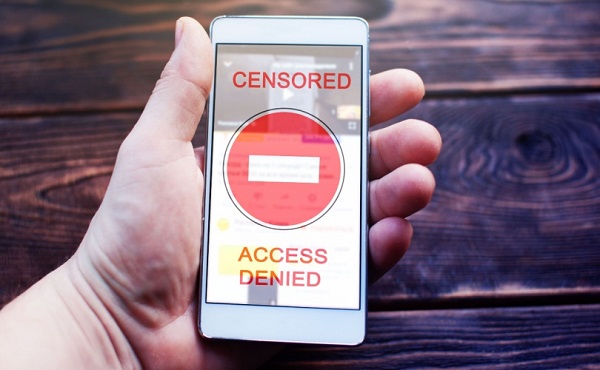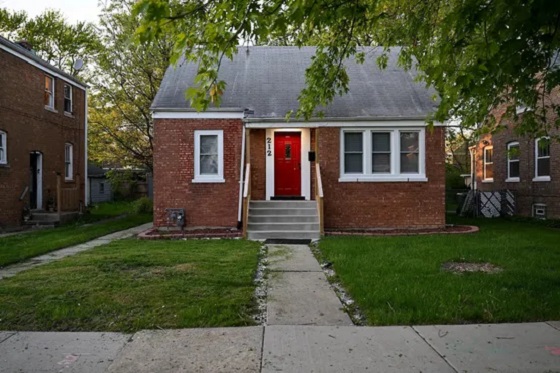Addictions
Opioid seizures exploded by 3,000% in Ontario city after “safer supply” experiment

A London police drug seizure in April included 9,298 Dilaudid eight milligram tablets.
Doctors and journalists wondering why local police failed to disclose concerning statistic to public sooner
Nigel Stuckey saved more lives during the last five years of his policing career than the previous three decades combined. “Every time you go back to the street, it has a different flavour,” said Stuckey, a former sergeant with the London Police Service (LPS) who retired in 2022. “As a frontline police officer, you are constantly going to overdoses in the city. I’ve administered Narcan to multiple people, and this is just something that never existed before.”
Stuckey first noticed a dramatic increase in overdoses and drug-related crimes occurring throughout his city – London, Ontario – in 2019. While the reasons behind this increase were initially unclear, recent data released by the LPS suggest that “safer supply” programs may be contributing to the problem.
Safer supply programs aim to save lives by providing drug users with pharmaceutical-grade alternatives to the untested street supply. That typically means distributing hydromorphone, a heroin-strength opioid, as an alternative to illicit fentanyl. However, addiction experts say the program is having the opposite effect, as many people who are enrolled in safer supply programs are illegally selling or trading their prescribed hydromorphone on the black market, a practice known as “diversion.”
Harm reduction advocates claim that safer supply diversion is not a significant issue, but according to an investigation into London Police Services (LPS) seizure data by journalist Adam Zivo, the number of hydromorphone tablets seized in London increased by 3,000 per cent after access to safer supply was greatly expanded in 2020.
In 2019, the LPS seized fewer than 1,000 hydromorphone tablets. This number jumped significantly in 2020 and continued to rise afterwards, reaching 30,000 tablet seizures last year – an unprecedented amount. The London police estimate that last year’s record will be met or exceeded by the end of 2024.
Doctors have said that this is only representative of a small fraction of what is actually out there, and that just 3-4 of these pills, if snorted, are enough to induce an overdose in a new user.
Some people are wondering why this data wasn’t released months, if not years, earlier.
Dr. Sharon Koivu, a London-based addiction physician, was among the first to recognize the harms of safer supply and has been warning the public about widespread diversion for years. Based on her clinical experiences, she believes that diverted safer supply hydromorphone is causing new addictions and falling into the hands of youth.
When Koivu tried to speak out against safer supply and call attention to diversion and an overall lack of program transparency, she was bullied and told that the suffering she was witnessing didn’t exist. This harassment was so severe that her mental health deteriorated and she worried about whether her career had been irreversibly damaged – yet the London police had quietly possessed data showing that she was right all along.
“It’s become an ideological thing,” she said. “People seem to have doubled down on the information they have. They don’t want to hear from someone who has information and concerns that don’t align with their, I’m going to say, ideology – because it’s not science.”
News of skyrocketing hydromorphone seizures might have remained hidden from the public had it not been for a major bust earlier this year.
Subscribe to our newsletter to get our latest news and analysis – or donate to our investigative journalism fund.
On April 12, the London police announced a drug seizure which included 9,298 hydromorphone eight-milligram tablets. When Zivo inquired into this seizure, he received no answers to his questions for almost two months. He says that he was “stonewalled” and that the police seemed unwilling to release key data until it became impossible for them not to.
Zivo found it particularly concerning that the 2019-2023 hydromorphone seizure data was not released earlier. “Journalists and addiction physicians have been trying to raise the alarm about this issue for years,” he said, “but have been called liars, grifters and fearmongers, despite the fact that data validating their concerns existed and was held by the London Police Service.”
Stuckey, who now works as a documentary filmmaker covering London’s homelessness, addiction and mental health crisis, had a similar experience when he queried the LPS about the 9,290 hydromorphone pills seized this April.
Despite multiple requests for information about a possible connection to safer supply, the police service did not get back to him. He expressed frustration at the police’s unresponsiveness and worried that a lack of government transparency is endangering both the general public and law enforcement officers.
“Members of the London Police Service are being put in harm’s way dealing with organized crime and firearms to take drugs off the street, which were provided by the federal government. It’s absolute lunacy that we are paying one branch of government to rid a problem that was created by another branch of government,” said Stuckey.
It would be deeply concerning if the LPS knowingly withheld data pertaining to safer supply diversion. Not only has the failure to publish such data hindered informed public debate and policy development, it has also compromised the safety of the very communities which police are tasked with protecting.
According to Zivo, safer supply programs have benefitted from the silence of powerful institutions like the LPS. He said that, as there seems to be significant institutional resistance to acknowledging the community harms of safer supply, then more attention and trust should be given to local grassroots-level addiction medicine practitioners “who are bravely testifying to what they are seeing in their clinics.”
However, Dr. Koivu thinks that “the tide is turning” and that more people are beginning to understand the harms of safer supply
“I think it’s unfortunate that this data wasn’t made available sooner, when it was relevant to the funding of these programs and the changes we’re seeing in the city. The police need to be accountable for that. I really don’t understand their rationale for not addressing this” she said. “They hung me out to dry while knowing that what I was saying was accurate. If the police are afraid to come forward, no wonder physicians are afraid to come forward, too.”
 |
A guest post by
|
Addictions
‘Over and over until they die’: Drug crisis pushes first responders to the brink

First responders say it is not overdoses that leave them feeling burned out—it is the endless cycle of calls they cannot meaningfully resolve
The soap bottle just missed his head.
Standing in the doorway of a cluttered Halifax apartment, Derek, a primary care paramedic, watched it smash against the wall.
Derek was there because the woman who threw it had called 911 again — she did so nearly every day. She said she had chest pain. But when she saw the green patch on his uniform, she erupted. Green meant he could not give her what she wanted: fentanyl.
She screamed at him to call “the red tags” — advanced care paramedics authorized to administer opioids. With none available, Derek declared the scene unsafe and left. Later that night, she called again. This time, a red-patched unit was available. She got her dose.
Derek says he was not angry at the woman, but at the system that left her trapped in addiction — and him powerless to help.
First responders across Canada say it is not overdoses that leave them feeling burned out — it is the endless cycle of calls they cannot meaningfully resolve. Understaffed, overburdened and dispatched into crises they are not equipped to fix, many feel morally and emotionally drained.
“We’re sending our first responders to try and manage what should otherwise be dealt with at structural and systemic levels,” said Nicholas Carleton, a University of Regina researcher who studies the mental health of public safety personnel.
Canadian Affairs agreed to use pseudonyms for the two frontline workers referenced in this story. Canadian Affairs also spoke with nine other first responders who agreed to speak only on background. All of these sources cited concerns about workplace retaliation for speaking out.
Moral injury
Canada’s opioid crisis is pushing frontline workers such as paramedics to the brink.
A 2024 study of 350 Quebec paramedics shows one in three have seriously considered suicide. Globally, ambulance workers have among the highest suicide rates of public service personnel.
Between 2017 and 2024, Canadian paramedics responded to nearly 240,000 suspected opioid overdoses. More than 50,000 of those were fatal.
Yet many paramedics say overdose calls are not the hardest part of the job.
“When they do come up, they’re pretty easy calls,” said Derek. Naloxone, a drug that reverses overdoses, is readily available. “I can actually fix the problem,” he said. “[It’s a] bit of instant gratification, honestly.”
What drains him are the calls they cannot fix: mental health crises, child neglect and abuse, homelessness.
“The ER has a [cardiac catheterization] lab that can do surgery in minutes to fix a heart attack. But there’s nowhere I can bring the mental health patients.
“So they call. And they call. And they call.”
Thomas, a primary care paramedic in Eastern Ontario, echoes that frustration.
“The ER isn’t a good place to treat addiction,” he said. “They need intensive, long-term psychological inpatient treatment and a healthy environment and support system — first responders cannot offer that.”
That powerlessness erodes trust. Paramedics say patients with addictions often become aggressive, or stop seeking help altogether.
“We have a terrible relationship with the people in our community struggling with addiction,” Thomas said. “They know they will sit in an ER bed for a few hours while being in withdrawals and then be discharged with a waitlist or no follow-up.”
Carleton, of the University of Regina, says that reviving people repeatedly without improvement decreases morale.
“You’re resuscitating someone time and time again,” said Carleton, who is also director of the Psychological Trauma and Stress Systems Lab, a federal unit dedicated to mental health research for public safety personnel. “That can lead to compassion fatigue … and moral injury.”
Katy Kamkar, a clinical psychologist focused on first responder mental health, says moral injury arises when workers are trapped in ethically impossible situations — saving a life while knowing that person will be back in the same state tomorrow.
“Burnout is … emotional exhaustion, depersonalization, and reduced personal accomplishment,” she said in an emailed statement. “High call volumes, lack of support or follow-up care for patients, and/or bureaucratic constraints … can increase the risk of reduced empathy, absenteeism and increased turnover.”
Kamkar says moral injury affects all branches of public safety, not just paramedics. Firefighters, who are often the first to arrive on the scene, face trauma from overdose deaths. Police report distress enforcing laws that criminalize suffering.
Understaffed and overburdened
Staffing shortages are another major stressor.
“First responders were amazing during the pandemic, but it also caused a lot of fatigue, and a lot of people left our business because of stress and violence,” said Marc-André Périard, vice president of the Paramedic Chiefs of Canada.
Nearly half of emergency medical services workers experience daily “Code Blacks,” where there are no ambulances available. Vacancy rates are climbing across emergency services. The federal government predicts paramedic shortages will persist over the coming decade, alongside moderate shortages of police and firefighters.
Unsafe work conditions are another concern. Responders enter chaotic scenes where bystanders — often fellow drug users — mistake them for police. Paramedics can face hostility from patients they just saved, says Périard.
“People are upset that they’ve been taken out of their high [when Naloxone is administered] and not realizing how close to dying they were,” he said.
Thomas says safety is undermined by vague, inconsistently enforced policies. And efforts to collect meaningful data can be hampered by a work culture that punishes reporting workplace dangers.
“If you report violence, it can come back to haunt you in performance reviews” he said.
Some hesitate to wait for police before entering volatile scenes, fearing delayed response times.
“[What] would help mitigate violence is to have management support their staff directly in … waiting for police before arriving at the scene, support paramedics in leaving an unsafe scene … and for police and the Crown to pursue cases of violence against health-care workers,” Thomas said.
“Right now, the onus is on us … [but once you enter], leaving a scene is considered patient abandonment,” he said.
Upstream solutions
Carleton says paramedics’ ability to refer patients to addiction and mental health referral networks varies widely based on their location. These networks rely on inconsistent local staffing, creating a patchwork system where people easily fall through the cracks.
“[Any] referral system butts up really quickly against the challenges our health-care system is facing,” he said. “Those infrastructures simply don’t exist at the size and scale that we need.”
Périard agrees. “There’s a lot of investment in safe injection sites, but not as much [resources] put into help[ing] these people deal with their addictions,” he said.
Until that changes, the cycle will continue.
On May 8, Alberta renewed a $1.5 million grant to support first responders’ mental health. Carleton welcomes the funding, but says it risks being futile without also addressing understaffing, excessive workloads and unsafe conditions.
“I applaud Alberta’s investment. But there need to be guardrails and protections in place, because some programs should be quickly dismissed as ineffective — but they aren’t always,” he said.
Carleton’s research found that fewer than 10 mental health programs marketed to Canadian governments — out of 300 in total — are backed up by evidence showing their effectiveness.
In his view, the answer is not complicated — but enormous.
“We’ve got to get way further upstream,” he said.
“We’re rapidly approaching more and more crisis-level challenges… with fewer and fewer [first responders], and we’re asking them to do more and more.”
This article was produced through the Breaking Needles Fellowship Program, which provided a grant to Canadian Affairs, a digital media outlet, to fund journalism exploring addiction and crime in Canada. Articles produced through the Fellowship are co-published by Break The Needle and Canadian Affairs.
Addictions
New RCMP program steering opioid addicted towards treatment and recovery

News release from Alberta RCMP
Virtual Opioid Dependency Program serves vulnerable population in Red Deer
Since April 2024, your Alberta RCMP’s Community Safety and Well-being Branch (CSWB) has been piloting the Virtual Opioid Dependency Program (VODP) program in Red Deer to assist those facing opioid dependency with initial-stage intervention services. VODP is a collaboration with the Government of Alberta, Recovery Alberta, and the Alberta RCMP, and was created to help address opioid addiction across the province.
Red Deer’s VODP consists of two teams, each consisting of a police officer and a paramedic. These teams cover the communities of Red Deer, Innisfail, Blackfalds and Sylvan Lake. The goal of the program is to have frontline points of contact that can assist opioid users by getting them access to treatment, counselling, and life-saving medication.
The Alberta RCMP’s role in VODP:
- Conducting outreach in the community, on foot, by vehicle, and even UTV, and interacting with vulnerable persons and talking with them about treatment options and making VODP referrals.
- Attending calls for service in which opioid use may be a factor, such as drug poisonings, open drug use in public, social diversion calls, etc.
- Administering medication such as Suboxone and Sublocade to opioid users who are arrested and lodged in RCMP cells and voluntarily wish to participate in VODP; these medications help with withdrawal symptoms and are the primary method for treating opioid addiction. Individuals may be provided ongoing treatment while in police custody or incarceration.
- Collaborating with agencies in the treatment and addiction space to work together on client care. Red Deer’s VODP chairs a quarterly Vulnerable Populations Working Group meeting consisting of a number of local stakeholders who come together to address both client and community needs.
While accountability for criminal actions is necessary, the Alberta RCMP recognizes that opioid addiction is part of larger social and health issues that require long-term supports. Often people facing addictions are among offenders who land in a cycle of criminality. As first responders, our officers are frequently in contact with these individuals. We are ideally placed to help connect those individuals with the VODP. The Alberta RCMP helps those individuals who wish to participate in the VODP by ensuring that they have access to necessary resources and receive the medical care they need, even while they are in police custody.
Since its start, the Red Deer program has made nearly 2,500 referrals and touchpoints with individuals, discussing VODP participation and treatment options. Some successes of the program include:
- In October 2024, Red Deer VODP assessed a 35-year-old male who was arrested and in police custody. The individual was put in contact with medical care and was prescribed and administered Suboxone. The team members did not have any contact with the male again until April 2025 when the individual visited the detachment to thank the team for treating him with care and dignity while in cells, and for getting him access to treatment. The individual stated he had been sober since, saying the treatment saved his life.
- In May 2025, the VODP team worked with a 14-year-old female who was arrested on warrants and lodged in RCMP cells. She had run away from home and was located downtown using opioids. The team spoke to the girl about treatment, was referred to VODP, and was administered Sublocade to treat her addiction. During follow-up, the team received positive feedback from both the family and the attending care providers.
The VODP provides same-day medication starts, opioid treatment transition services, and ongoing opioid dependency care to people anywhere in Alberta who are living with opioid addiction. Visit vodp.ca to learn more.
“This collaboration between Alberta’s Government, Recovery Alberta and the RCMP is a powerful example of how partnerships between health and public safety can change lives. The Virtual Opioid Dependency Program can be the first step in a person’s journey to recovery,” says Alberta’s Minister of Mental Health and Addiction Rick Wilson. “By connecting people to treatment when and where they need it most, we are helping build more paths to recovery and to a healthier Alberta.”
“Part of the Alberta RCMP’s CSWB mandate is the enhancement of public safety through community partnerships,” says Supt. Holly Glassford, Detachment Commander of Red Deer RCMP. “Through VODP, we are committed to building upon community partnerships with social and health agencies, so that we can increase accessibility to supports in our city and reduce crime in Red Deer. Together we are creating a stronger, safer Alberta.”
-

 MAiD2 days ago
MAiD2 days agoCanada’s euthanasia regime is already killing the disabled. It’s about to get worse
-

 Daily Caller16 hours ago
Daily Caller16 hours agoUSAID Quietly Sent Thousands Of Viruses To Chinese Military-Linked Biolab
-

 Alberta13 hours ago
Alberta13 hours ago‘Far too serious for such uninformed, careless journalism’: Complaint filed against Globe and Mail article challenging Alberta’s gender surgery law
-

 Censorship Industrial Complex23 hours ago
Censorship Industrial Complex23 hours agoCanadian pro-freedom group sounds alarm over Liberal plans to revive internet censorship bill
-

 Fraser Institute1 day ago
Fraser Institute1 day agoBefore Trudeau average annual immigration was 617,800. Under Trudeau number skyrocketted to 1.4 million from 2016 to 2024
-

 International2 days ago
International2 days agoChicago suburb purchases childhood home of Pope Leo XIV
-

 Daily Caller2 days ago
Daily Caller2 days ago‘I Know How These People Operate’: Fmr CIA Officer Calls BS On FBI’s New Epstein Intel
-

 Economy1 day ago
Economy1 day agoThe stars are aligning for a new pipeline to the West Coast




